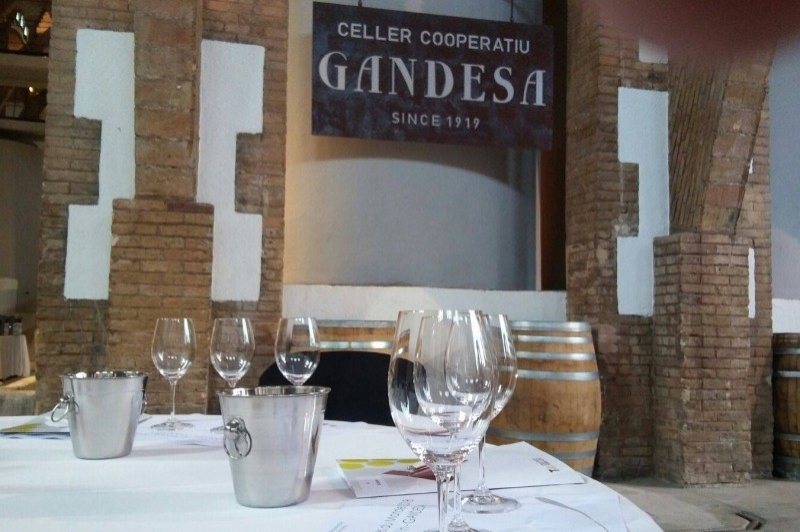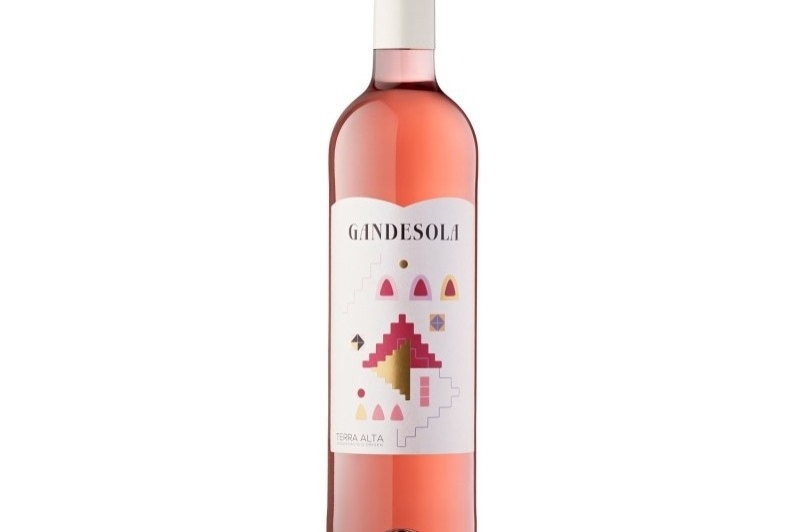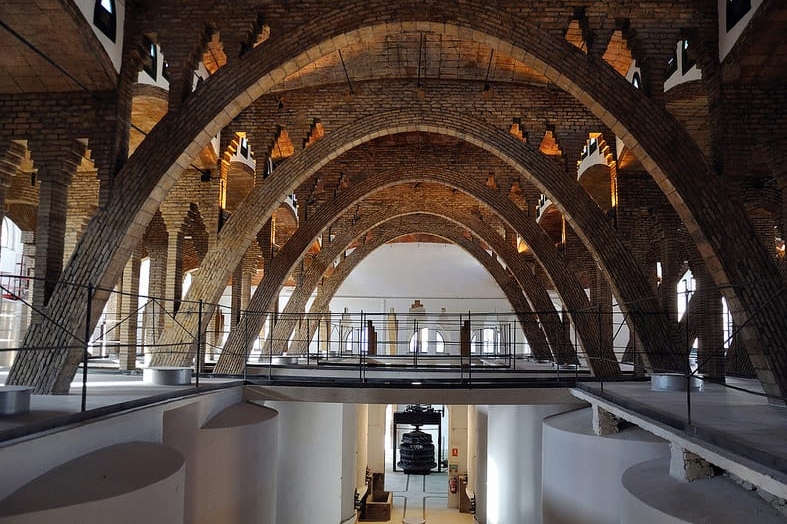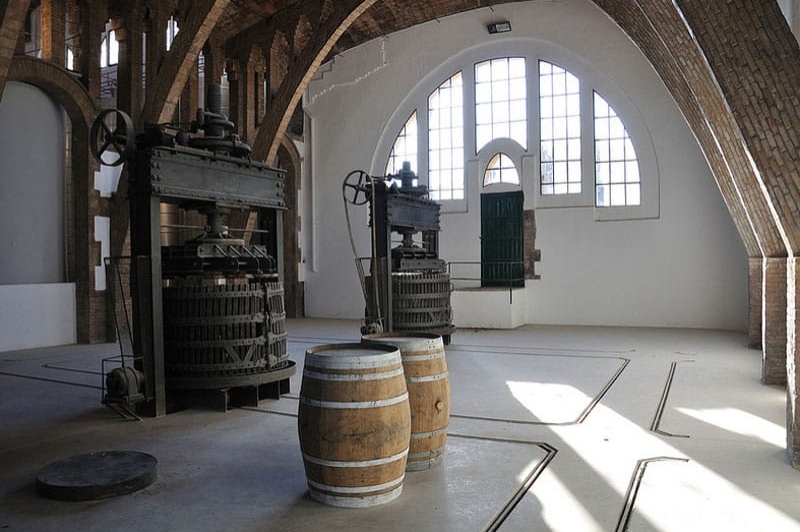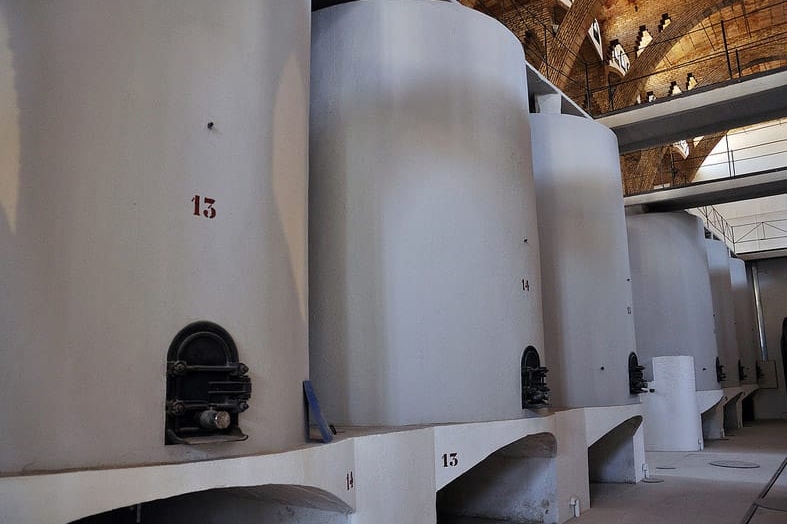Cooperativa de Gandesa Gandesa
In 1918, the winegrowers of Gandesa got together to build a winery where they could make wine, and thus the Bodega Cooperativa Agrícola de Gandesa was born. They had to take out a loan to obtain financing for the construction of the winery, and they did so by mortgaging their land and private property. Once this challenge was met, it was the Valls bank that took charge of the financing and at the same time proposed the Modernist architect Cesar Martinell ( Valls, Alt Camp, 24 December 1888 – Barcelona, 19 November 1973).
The Building
Modernist building where the construction of the winery for wine production was completed in January 1920, and its oil mill in November of the same year. These features have made it a unique building in the town of Gandesa ever since.
Its architectural value has led it to be considered one of the Cathedrals of Wine. It is listed as a Cultural Asset of National Interest by the Generalitat of Catalonia, and one of the Seven Wonders of Catalonia, chosen in 2007.
Visits
You can visit the cooperative as it was designed by Cesar Martinell, with the press room, vats, etc. At the end of the guided tour, there is a wine tasting, and you can buy the wines to take back to the winery shop.
Schedule:
Guided tours: €12 with tasting or €8 without tasting. Visit times:
- Wednesday, Thursday, Saturday and Sunday (mornings): Shift at 9:30, 11 a.m. and 12:30 p.m.
- Friday and Saturday (afternoons): Shift at 4pm and 5:30pm
Free visits with audio guide: €5
- Monday to Friday from 9 a.m. to 1:30 p.m. and from 3 p.m. to 5:30 p.m.
Elaboration
After almost a century of making wine, Gandesa also produces Rancio wine and Mistela de las Garnachas - a deeply rooted variety - in the DO Terra Alta. These mistelas are a limited production.
In addition to the white and red Garnacha (bernacha, as they call it in Gandesa), other varieties are grown such as Macabeo, Tempranillo, Mazuela, Cabernet Sauvignon, Moscatel, Viogne, among others.
The combination of different orographic and climatic factors, etc., give the “terroir” unique characteristics, and these, together with oenology, result in wines that are appreciated by consumers.
Distribution
Today, Gandesa wines are distributed regionally and have also begun to be exported in recent years. They are working to expand and consolidate these markets.



